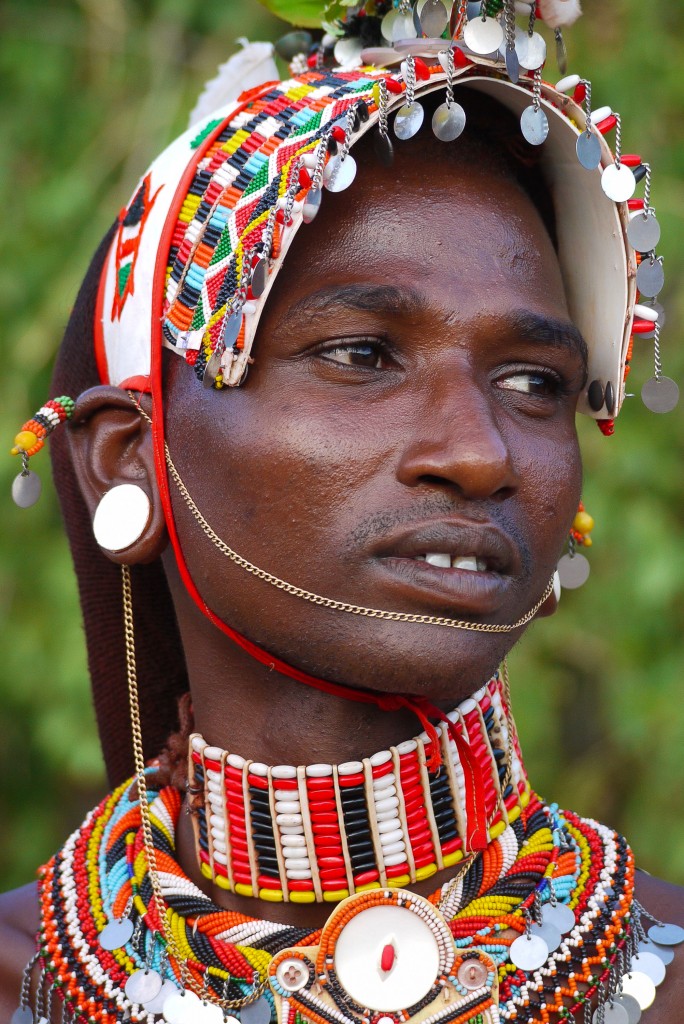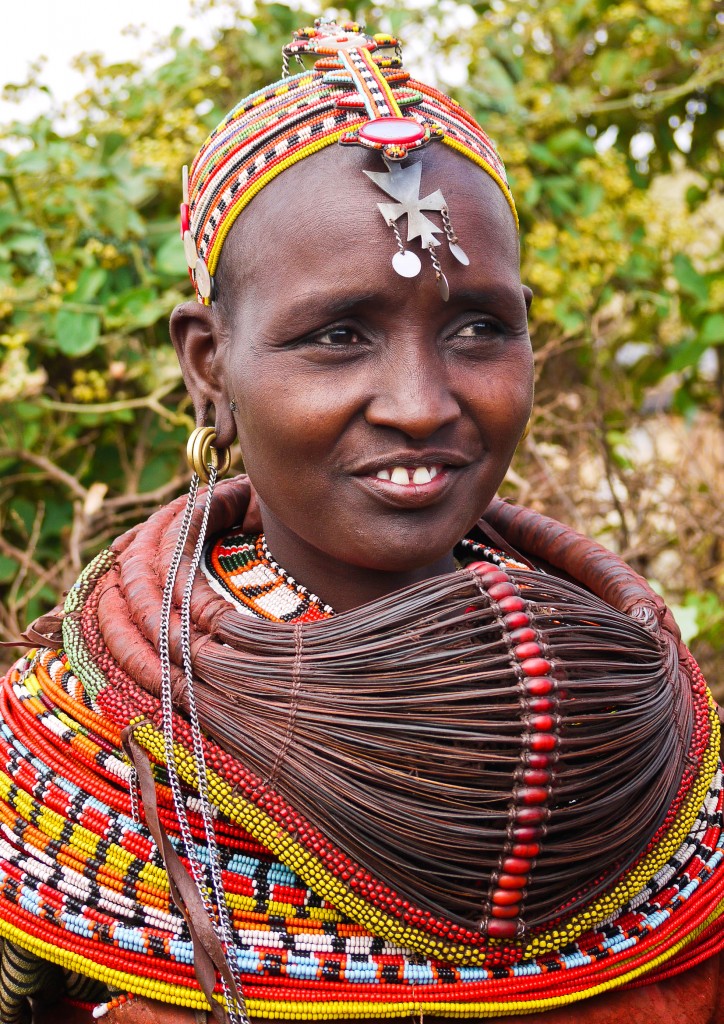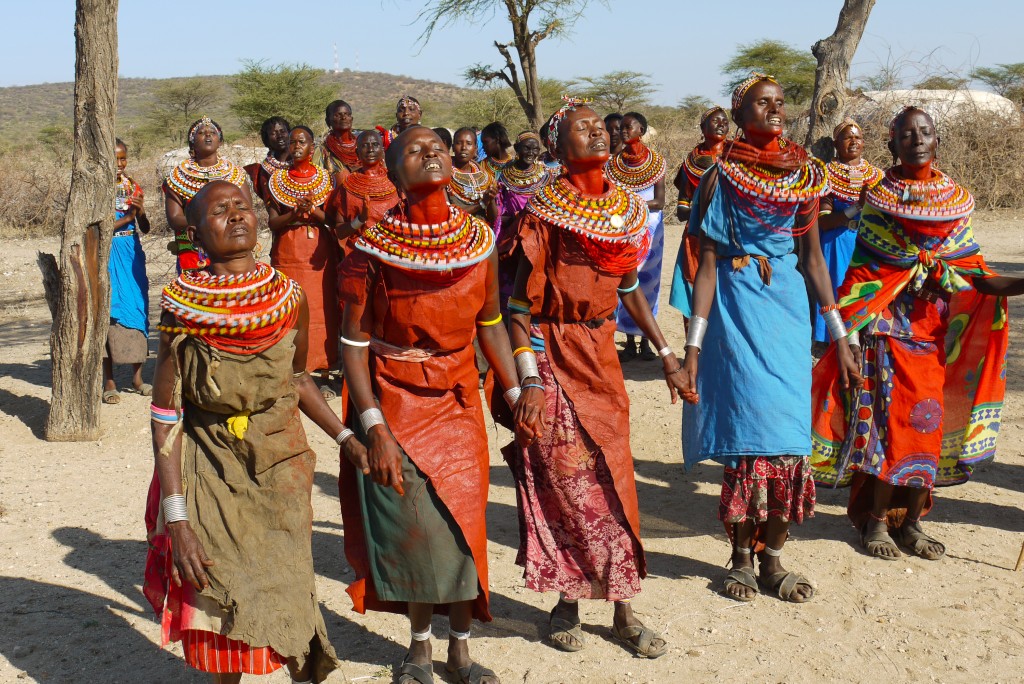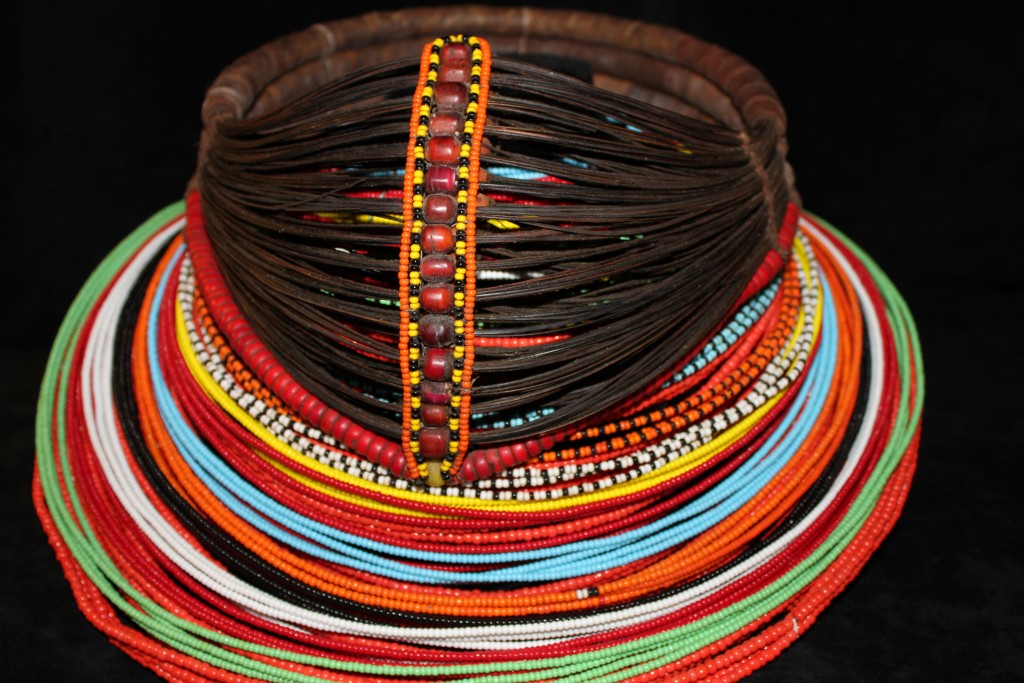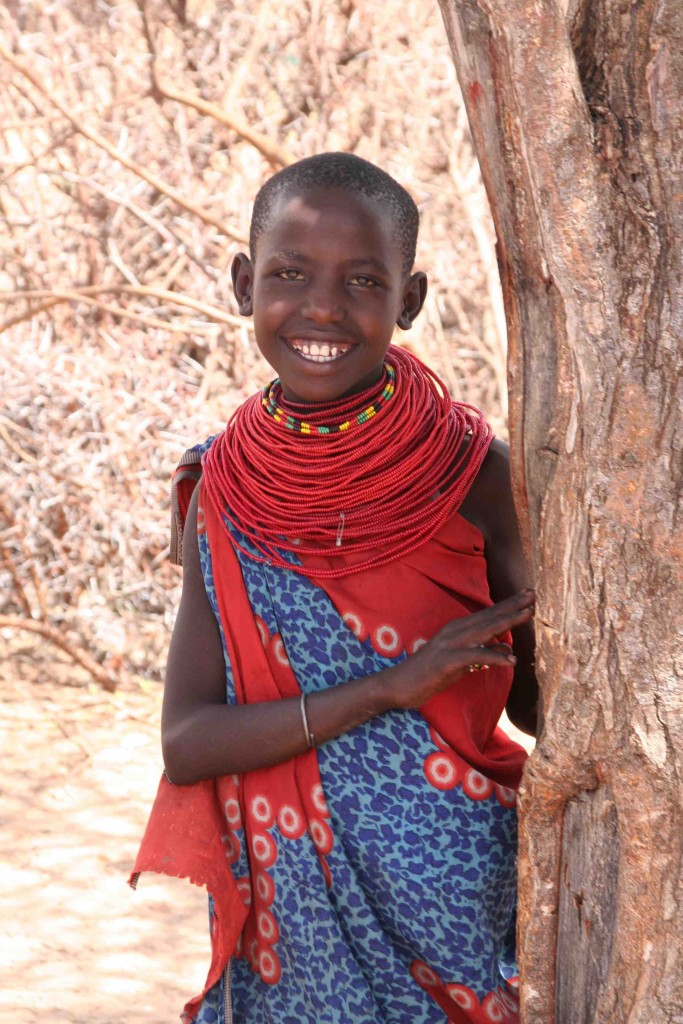In Northern Kenya, just north of the equator in the Rift Valley, you find the Samburu. They are closely related to the Masaai and speak a similar language, but they are also two distinctive tribes with their own traditions and pride. Traditionally they are semi-nomadic pastoralists and keep cattle as well as sheep, goats and camels. Their diet consists mostly of milk and sometimes blood from their cows, just like the Masaai, as well as roots and vegetables. Because of the cattle they need to find new grazing grounds every 5-6 weeks and their wealth is in their animals and jewelleries.
Beads communicate social status for both Samburu women and men. A Samburu warrior describes a beautiful girl as someone who has beaded necklaces all the way up to her chin. A beautiful girl has many admirers, who make gifts of beads which both define and reinforce her beauty. Since most girls get married at the age of fourteen to sixteen, they start collecting necklaces at the age of 7-8. And by the age of marriage they have a substantial collection. They use bright colours of red, white, yellow and orange that is stringed up on wires. The fashion is changing by time and also between groups of Samburu, but they are still easy to recognize as tribe. Married women traditionally worn a weaved collar made up of fibres from plant or thick animal hair decorated with beads in the front and down – a sign that she had passed into another stage in life. Samburu women also wear earlobes and beaded headbands with metal decorations hanging down from it.
Samburu men also use a lot of beadwork to adorn themselves, made by their girlfriends and mothers. From the age of 13-14 to up to 30 they are called warriors, living a free life in the group to get all the experience they need in life to become elder. They spend a lot of time decorating themselves to attract young women.
A big thank you to my Flickr-friend Rita Willaert for giving me permission to use some of her beautiful Pictures https://www.flickr.com/photos/rietje/
